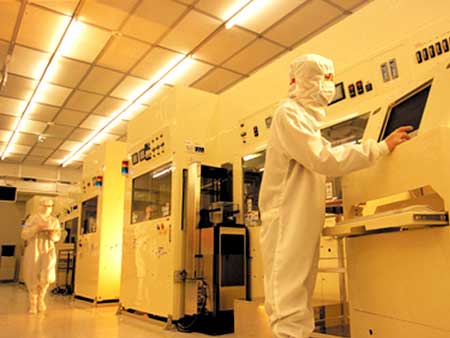UMC said today it chalked up an operating of NT$3.61 billion, or 12.7% of revenue in the third quarter ended Sept. 30, compared to NT$3.18 billion in the 2nd quarter on revenue of NT$28.53 billion, a 3.3% quarter-over-quarter increase from NT$27.62 billion in 2Q12. The 3rd revenue represents a 13.3% year-over-year increase from NT$25.19 billion in the same quarter of 2011.
Its successful migration to a 40nm technology for SOC solutions and specialty embedded flash chip for booming touch screen sensors helped lift up revenue and operating profit. During the quarter, UMC had kept its line busy with meeting a rush of fabrication orders, having operated its fabrication lines at a capacity utilization of 84%.
Looking forward to 2013, the contact chip maker forecasts recovery in chip demand will rest with macroeconomic conditions, end-product demand, especially for new breed of products lie Surface PCs and Ultrabooks.
Dr. Shih-Wei Sun, CEO of UMC, said, "In the third quarter of 2012, both UMC's revenue and operating profit continued to grow. Wafer shipments reached 1.13 million 8-inch equivalent wafers, with overall capacity utilization at 84%”

Touching on the chipmaker’s migration to a 28nm technology, Dr. Sun continued, "28nm progress is within our expectation, with yield enhancement of design-in products continuing to improve. For first-wave 28nm product matching business, we are seeing evident yield progression for ported ICs after adjusting our process and device parameters during recent months.”
UMC also successfully taped out a mobile communication product in the 3Q using its 28nm high-k/-metal-gate (gate-last) process. The chip maker is subsequently collaborating closely with customers for their 28nm mobile communication & computing, wired & wireless connectivity, DTV, data storage controller, and programmable logic products.
Meanwhile, based on our IBM’s FinFET licensing, UMC has decided to aggressively develop 14nm FinFET technology on 20nm metal. The 14nm FinFET will deliver the most optimal low-power and high-performance solution to offset the cost impact from using double patterning lithography."
Dr. Sun added, "Foundry is prone to both inventory correction and industry cycles. We expect the present inventory adjustment to continue into early next year.'"

